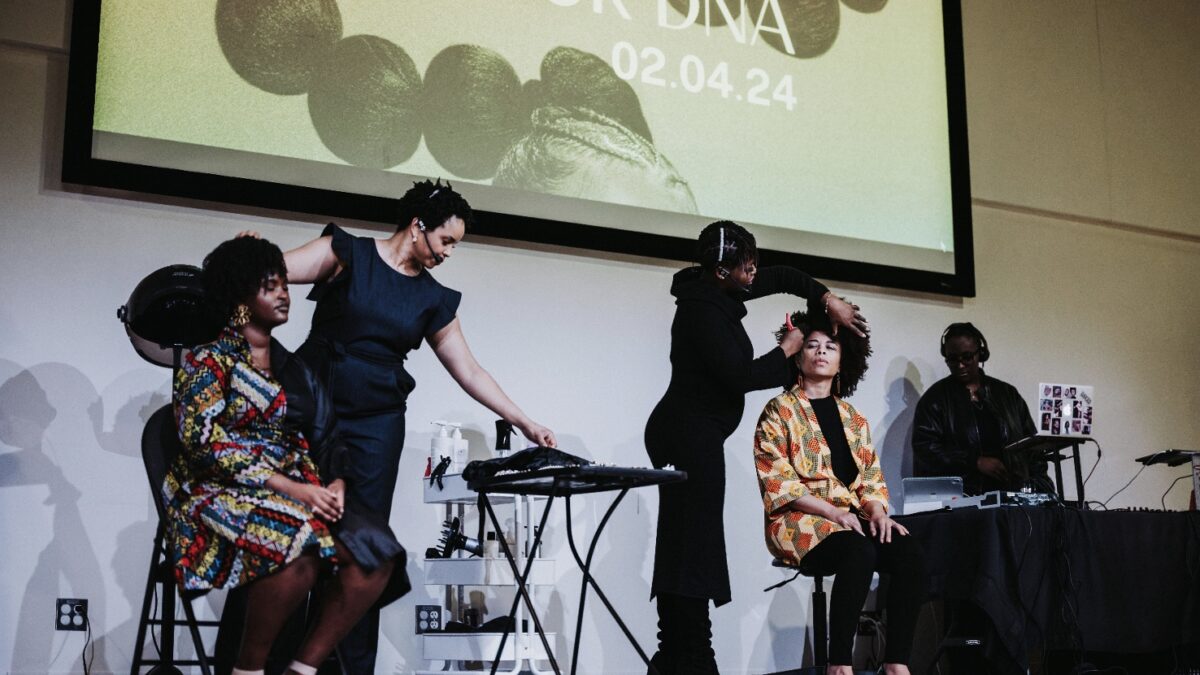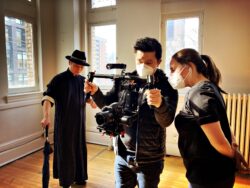Black hair was the focus of a recent event at the Canada Science and Technology Museum.
The evening of unique visuals and spoken testimonies featured creations that captured stunning aspects of innovation in hair design techniques using trailblazing technology for stylistic expression.
The night was the work of a unique partnership between event organizer Hors Pair Social and arts promoter The Moving Art Gallery — both Black-owned businesses — and Ingenium, the federal agency that operates the science museum as well as the Canada Aviation and Space Museum and Canada Agriculture and Food Museum.
Called Crépu: Our DNA, the exhibition celebrated Black artistry and, according to Ingenium, it showed that hair can be a form of self-preservation, creativity and cultural identity.
“Last year, the first iteration (of the exhibition) at SAW Gallery (in downtown Ottawa) was sold out. Capacity was about 100 people. And we noticed a natural connection,” said Alexa Lepera, Ingenium’s assistant curator of domestic environments in social diversity at Ingenium. “Many people want to talk and learn about Black hair and express themselves artistically.”
The event featured a live hair-care demo, a hair-art runway and a museum presentation on the history of innovation in Black hair-care technology in Canada. There were also hair-care vendors, a film screening, musical performances and panel discussions. The museum had its own presentation which highlighted artifacts such as the blow dryer and hot comb.
“There’s an inherent connection with the Science and Technology Museum. There’s science and innovation behind braiding styles, patterns and aesthetics. I think that’s the connection we wanted to welcome,” Lepera said, explaining why Ingenium was interested in participating.
For audience members, the hair-care demonstration and hair-art runway vividly portrayed the duality of the art and science surrounding black hair.
The demonstration highlighted the science behind trimming, shaping and moisturizing hair. Stylist Paula Whitelocke challenged perceptions of Black hair by debunking myths and instilling confidence in personal expression and hair care.
“Our focus with clients is shape. But culturally speaking, we’re mostly focused on length. But what’s the point of having long hair if it isn’t healthy?” said Whitelocke. “We recommend trims for this reason. You always want to prioritize health over length with your natural haircut.”
Much attention was on the unique styles featured during the evening’s Hair-art runway at Crépu: Our DNA. [Video @ Madonna Garang]
Audience members laughed, applauded and occasionally gasped as Whitelocke spoke.
“The key for our clients is the acceptance of their coily, kinky and curly hair, especially its different curl states. But if you see the texture of the dry hair versus the hydrated … both (are) beautiful,” she said.
While Whitelocke demonstrated the acceptance of the beauty of black hair, runway models followed up with a celebration of it.
The runway showcased endless varieties of hair sculpture. Models strutted hair designs using rubber, braids and synthetic hair, all created by local designers Charifa Labarang and Solit Isak.
A highlight of gravity-defying hair came from the designer Delize Scott’s butterfly collection, modelled by Ricky Rose, Kessy Keza and Melissa Byicaza.
“I wanted to project the journey of understanding and love we endure. With the garden look, I wanted to represent peace with our natural hair,” said Scott.
Her work symbolizes innovation in the representation of black designs in fashion and art. “Hair speaks volumes,” she said. “When you walk into a room, it speaks for you before you even speak.”




